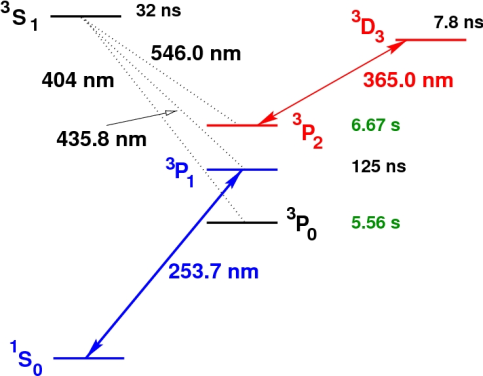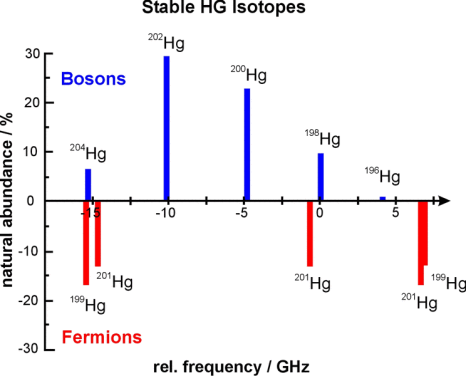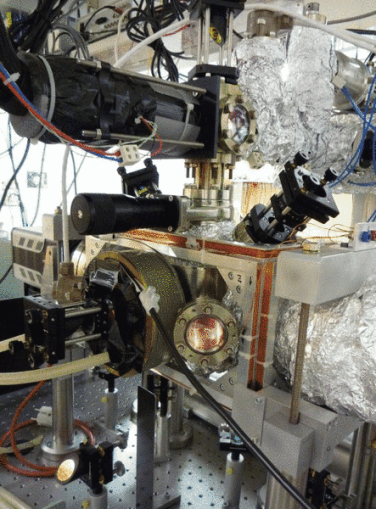Experiments
- It does not have fine- or hyperfine structure in the groundstate. Therefore, no repumping laser is required and trapping should be straight forward.
- It has two meta-stable states, one of which is the lower level of a cycling transition, i.e. a magneto-optical trap can be set up to also trap mercury on that transition. The lifetimes of these two meta-stable states are fairly long. In fact they are so long that they have never been measured. Calculations show lifetimes in the order of 5 seconds.
In principle a magneto-optical trap consists of six laser beams, two opposing for each direction of space. The laser beams are red detuned which leads to a velocity dependent force. In combination with a three dimensional magnetic field, leading to a position dependent force, atoms can be cooled and trapped. To simplify the setup, we use three laser beams which are reflected back through the magnetic field.









